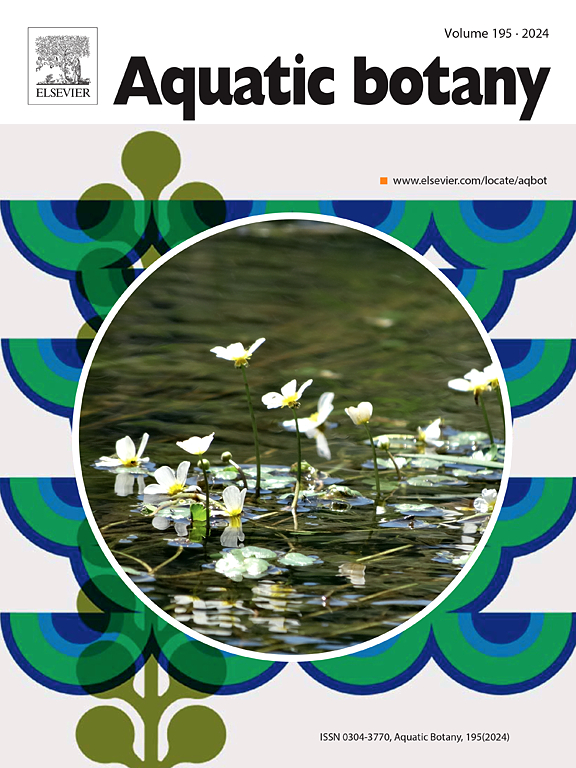日本中部爱知县中新世下Morozaki群的海草化石
IF 2.6
4区 生物学
Q2 MARINE & FRESHWATER BIOLOGY
引用次数: 0
摘要
在日本中部中新统Morozaki群(18.0-17.6 Ma)中发现了两个新的海草化石:Thalassites morozakiensis T. Yamada, sp. nov.和Maresurculus aichiensis T. Yamada, gen. et sp. 11 .。后者的叶呈带状,叶状,包裹在纤维鞘中,与现存的水螅亚科(Hydrocharitaceae)有亲缘关系。后者的特征是舌状叶脱落,茎上不留下叶鞘,表明与现存的cymodocaceae属,如Amphibolis和Thalassodendron有关系。这些化石代表了中新世早期海草的第一个可靠记录,与基于分子钟的海洋水螅科和Cymodoceaceae的分化时间估计一致。此外,它们还表明,在中新世早期晚期,海草将其活动范围扩展到了比今天更高的纬度,这是一个以全球变暖为标志的时期。本文章由计算机程序翻译,如有差异,请以英文原文为准。
Seagrass fossils from the lower Miocene Morozaki Group in Aichi Prefecture, central Japan
Two new seagrass fossils are reported from the upper lower Miocene Morozaki Group (18.0–17.6 Ma) of central Japan: Thalassites morozakiensis T. Yamada, sp. nov., and Maresurculus aichiensis T. Yamada, gen. et sp. nov. The former bears strap-shaped, eligulate leaves enclosed within a fibrous sheath, suggesting an affinity with the extant subfamily Hydrilloideae (Hydrocharitaceae). The latter is characterized by ligulate leaves shed without leaving a sheath on the stem, indicating a relationship to extant genera of Cymodoceaceae, such as Amphibolis and Thalassodendron. These fossils represent the first reliable records of seagrasses from the early Miocene, consistent with divergence-time estimates for marine Hydrilloideae and Cymodoceaceae based on molecular clocks. Additionally, they imply that seagrasses extended their range to higher latitudes than today during the late early Miocene, a period marked by global warming.
求助全文
通过发布文献求助,成功后即可免费获取论文全文。
去求助
来源期刊

Aquatic Botany
生物-海洋与淡水生物学
CiteScore
3.80
自引率
5.60%
发文量
70
审稿时长
6 months
期刊介绍:
Aquatic Botany offers a platform for papers relevant to a broad international readership on fundamental and applied aspects of marine and freshwater macroscopic plants in a context of ecology or environmental biology. This includes molecular, biochemical and physiological aspects of macroscopic aquatic plants as well as the classification, structure, function, dynamics and ecological interactions in plant-dominated aquatic communities and ecosystems. It is an outlet for papers dealing with research on the consequences of disturbance and stressors (e.g. environmental fluctuations and climate change, pollution, grazing and pathogens), use and management of aquatic plants (plant production and decomposition, commercial harvest, plant control) and the conservation of aquatic plant communities (breeding, transplantation and restoration). Specialized publications on certain rare taxa or papers on aquatic macroscopic plants from under-represented regions in the world can also find their place, subject to editor evaluation. Studies on fungi or microalgae will remain outside the scope of Aquatic Botany.
 求助内容:
求助内容: 应助结果提醒方式:
应助结果提醒方式:


